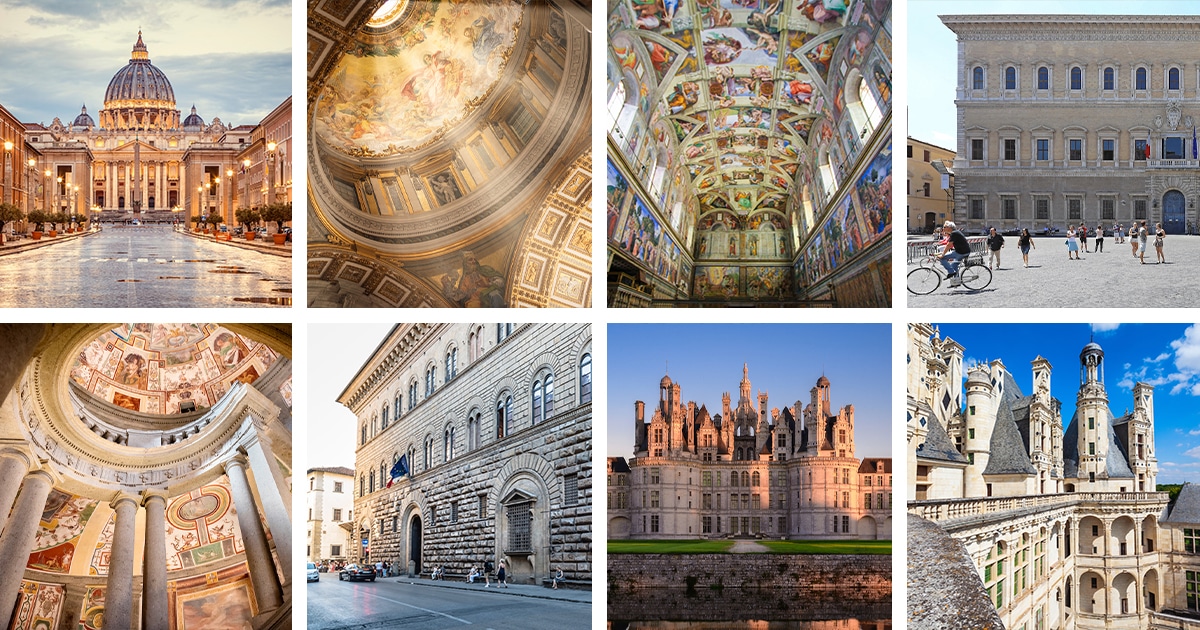
Left to right: St. Peter’s Basilica, St. Peter’s Basilica Detail, The Sistine Chapel, Palazzo Farnese, Palazzo Farnese Interior, Palazzo Medici Riccardi, Château de Chambord, Château de Chambord Detail
The Renaissance is well-known as a period of artistic revival and creation that lasted from the early 14th century through the early 16th century. This “rebirth” was a radical period that transformed culture, art, craft, sculpture, and of course, architecture. Aesthetically, it often focused on returning to the ordered elements of ancient Greek and Roman architecture.
Though Renaissance art and architecture spread rapidly throughout Europe, it began in Florence, Italy, with a few choice projects that perfected ideas on symmetry, proportion, and beauty. Since the Renaissance came before the decadent Baroque period, some of the Renaissance works on this list represent the transitions from one style to the next. Others represent the shift from Renaissance architecture to more Gothic design styles.
In this article, we break down the common characteristics that define Renaissance architecture and introduce you to five of our favorite buildings designed in the Renaissance style. You may just find the next destination on your travel bucket list!
In this article, we break down the characteristics of Renaissance architecture and some of the best examples of the style.
Characteristics of Renaissance Architecture
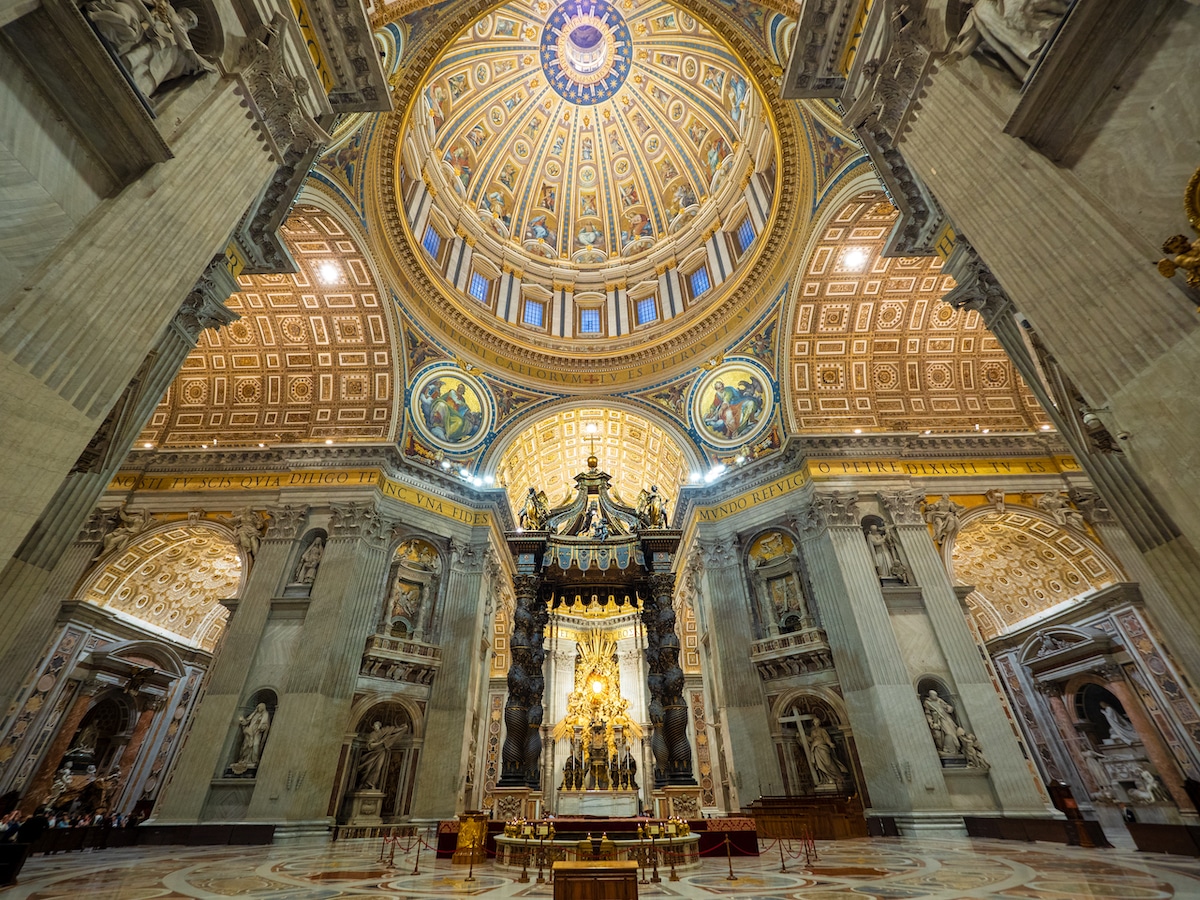
St. Peter’s Basilica in Vatican City (Photo: Stock Photos from silverfox999/Shutterstock)
Renaissance architecture, like other works of Renaissance art, focused on the creation of perfect beauty. This often takes the form of symmetry, a focus on proportion, and a back-to-basics approach to the Classical Greek and Roman orders.
Study of proportions — Ideas about natural beauty were rooted in a study of scale and proportions. Architectural elements were designed in reference to the human form. This resulted in the idea of a mathematical process that led to the perfect architectural work.
Elements of classical architecture — Renaissance architecture was truly a “rebirth.” Part of the rebirth was a return to what some believed was the height of architecture and art. Renaissance work often featured classical elements including domes, arches, lintels, and columns. Some projects also include the Classical orders: doric, ionic, corinthian, and composite orders.
Rectangular, symmetrical plans — Since the design of Renaissance architecture was largely focused on order and perfection of natural beauty, buildings were typically symmetrical in plan and were rectilinear or square.
Examples of Renaissance Architecture
St. Peter’s Basilica
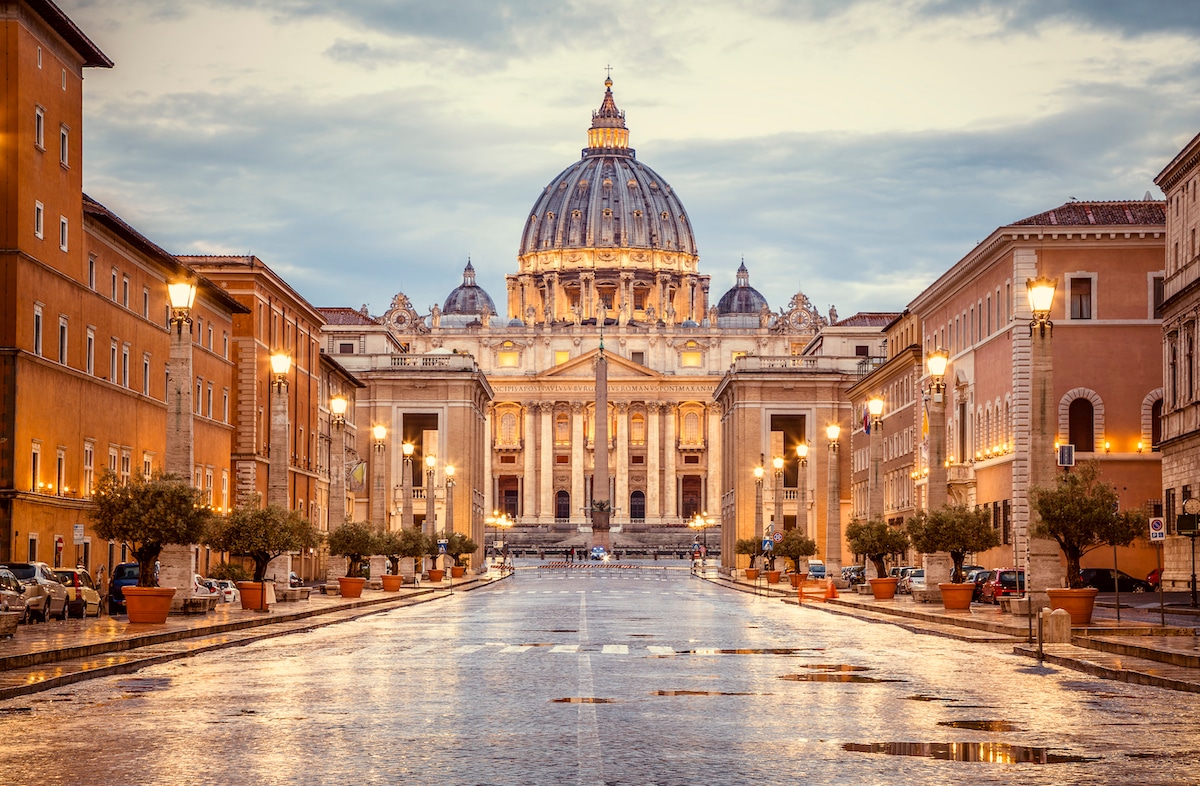
St. Peter’s Basilica in Vatican City (Photo: Stock Photos from Vladimir Sazonov/Shutterstock)
St. Peter’s Basilica is sometimes called the greatest of all Christian churches and one of the best examples of Renaissance architecture. It also includes many design elements in the Baroque style. Though the work occurred over a long period of time, much of the design was created by largely well-known architects and craftsmen including Donato Bramante, Michelangelo, Carlo Maderno, and Gian Lorenzo Bernini.
You can also find St. Peter’s Basilica on our list of baroque-style buildings that celebrate the extravagance of the architectural movement.
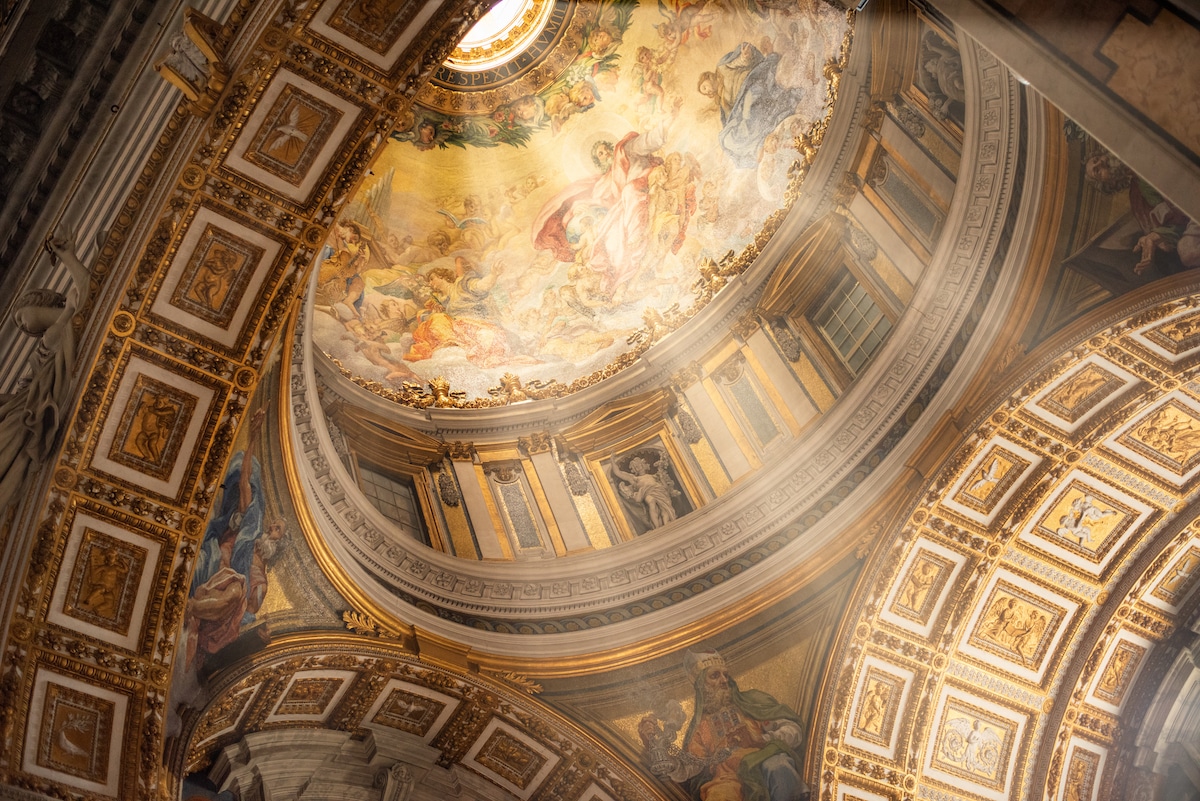
St. Peter’s Basilica in Vatican City (Photo: Stock Photos from Mahara/Shutterstock)
The Sistine Chapel
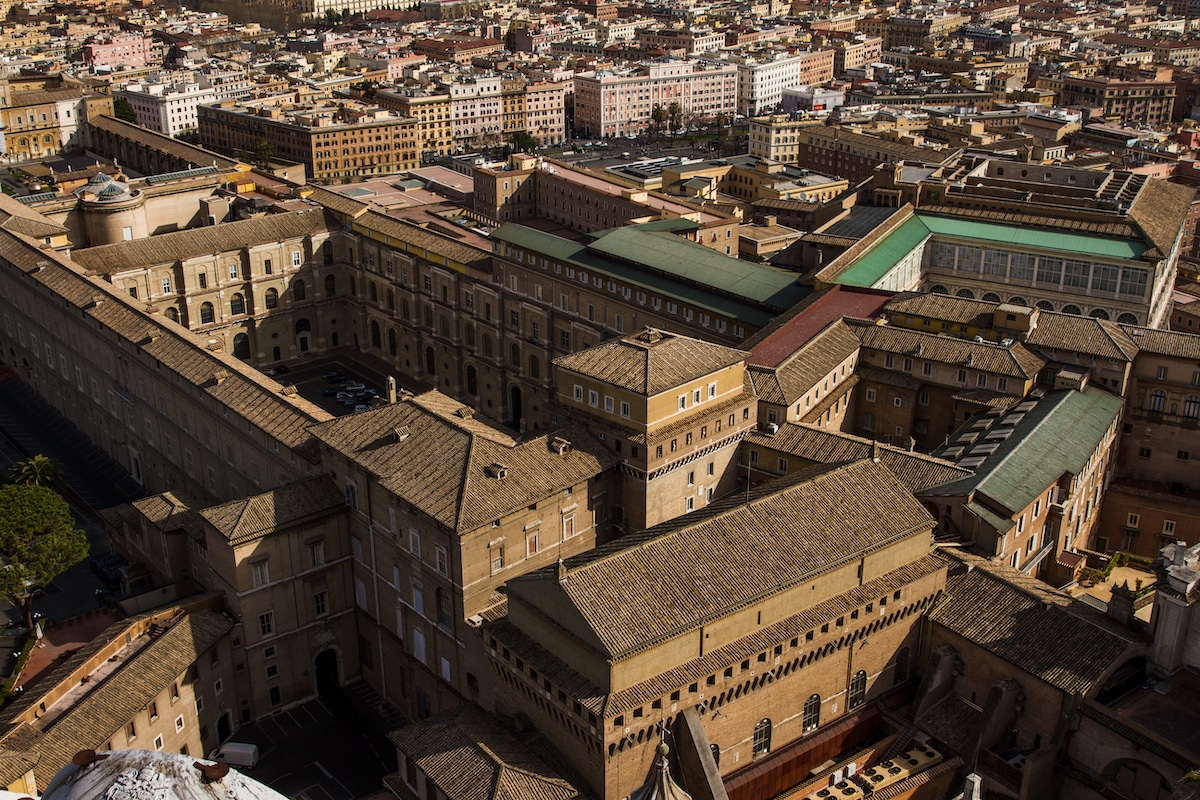
The Sistene Chapel in Vatican City (Photo: Stock Photos from Anna A Tarasenko/Shutterstock)
The Sistine Chapel is a famous chapel in the Apostolic Palace in Vatican City. It is best known for its famous Renaissance frescoes by Michelangelo, namely on the ceiling. Though the chapel’s exterior is very simple, the heightened interior is full of incredible frescoes by some of the best artists and craftsmen of the time.
To learn more, read our article on the story behind the Sistine Chapel’s ceiling.
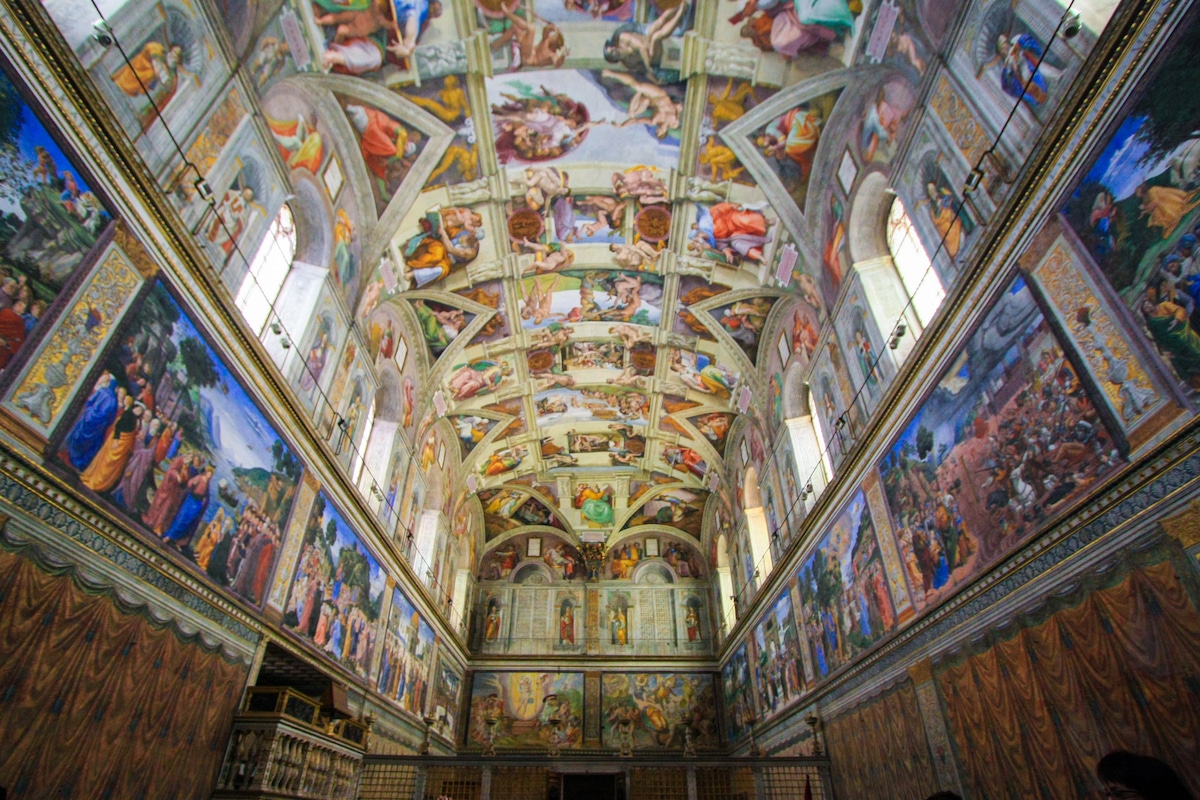
The Sistene Chapel in Vatican City (Photo: Stock Photos from Krikkiat/Shutterstock)
Palazzo Farnese
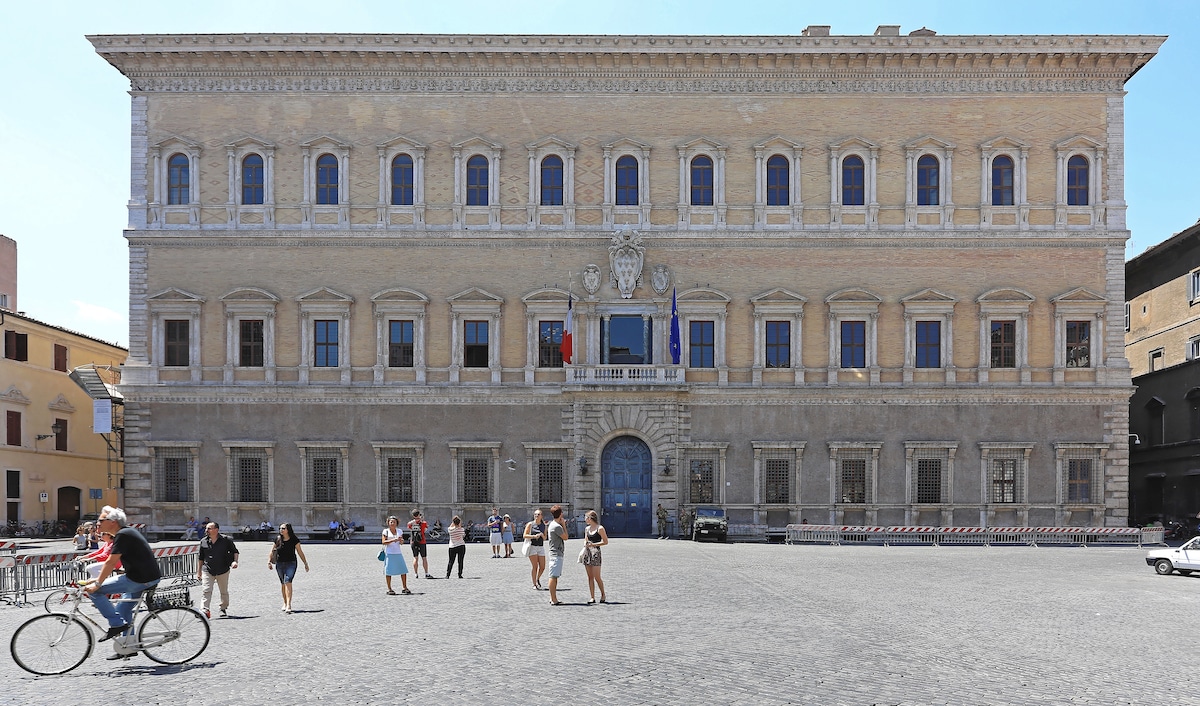
Palazzo Farnese in Rome, Italy (Photo: Stock Photos from Baloncici/Shutterstock)
Palazzo Farnese, designed for the Farnese family in 1517, is sometimes called the ultimate example of High Renaissance architecture, or at least of Renaissance palazzos.
It was originally designed by Antonio da Sangallo the Younger but was continued by many of the most influential architects of the Renaissance, including Jacopo Borozzi da Vignola, Giacomo della Porta, and Michelangelo.
Though it is such a great example of Italian art and architecture, Palazzo Farnese now acts as the French embassy.
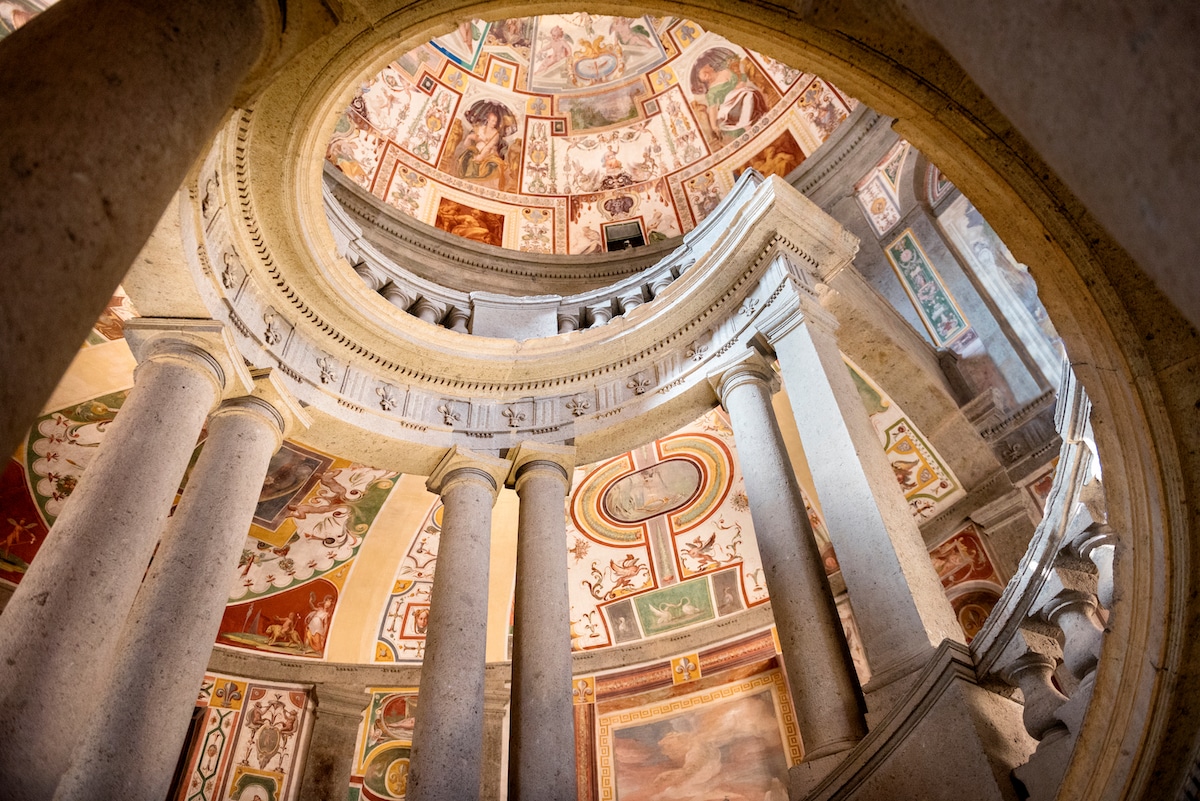
Palazzo Farnese in Rome, Italy (Photo: Stock Photos from Massimo Santi/Shutterstock)
Palazzo Medici Riccardi

Palazzo Medici Riccardi in Florence, Italy (Photo: Stock Photos from JJFarq/Shutterstock)
The Palazzo Medici Riccardi is an important example of Renaissance architecture in Florence, Italy, designed for the famous Medici family. It is described as the Renaissance house “where it all began” as it allowed for artists like Michelangelo, Donatello, Benozzo Gozzoli, and Botticelli to work.
Palazzo Medici Riccardi was designed by Michelozzo di Bartolomeo and was completed in 1484. The design for the palace is a great example of a tripartite scheme, or in three distinct vertical elevations. This façade treatment was very popular in the Renaissance because it symbolized the focus on the human scale’s influenced on architecture.
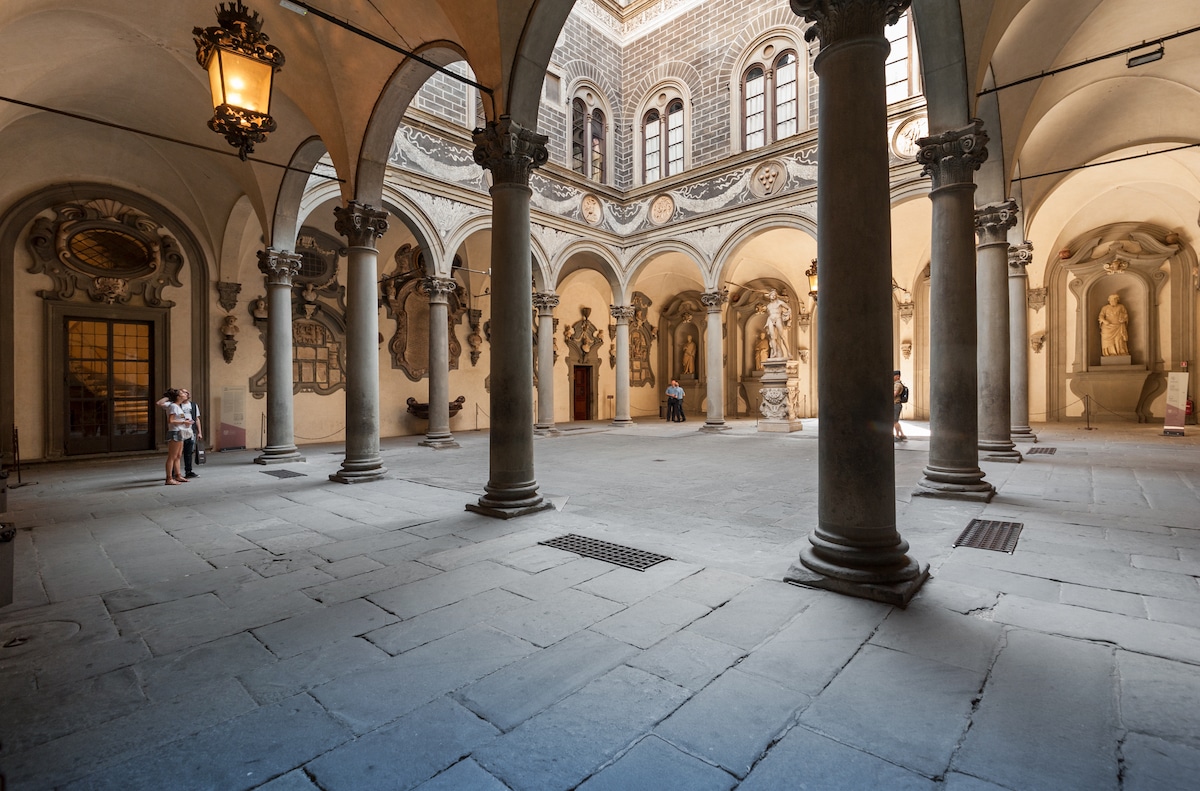
Palazzo Medici Riccardi in Florence, Italy (Photo: Stock Photos from Federico Magonio/Shutterstock)
Château de Chambord
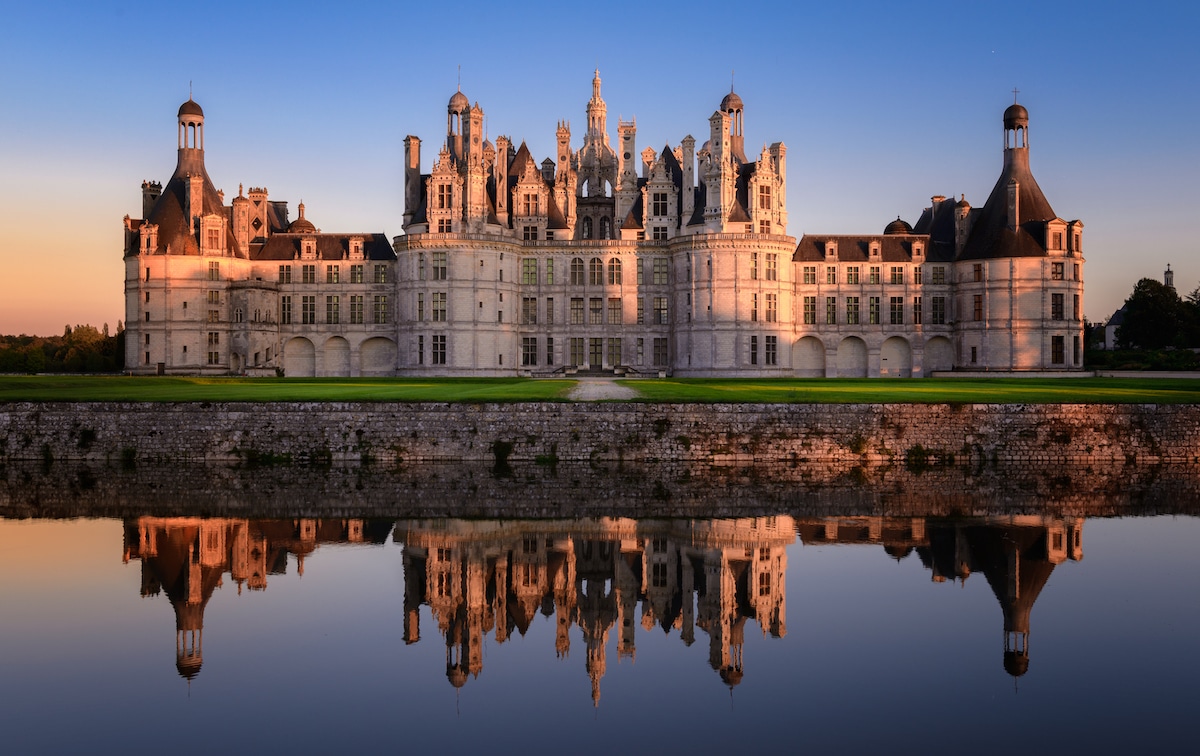
Château de Chambord in Chambord, Centre-Val de Loire, France (Photo: Stock Photos from Tsomchat/Shutterstock)
The Château de Chambord is an example of French Renaissance architecture, though it has many features of French medieval castles. The château was originally built as a hunting lodge for King Francis I who reigned from 1515 to 1547. Though the plan for the project was probably designed by Domenico da Cortona, potentially with major influences from Leonardo da Vinci, the final design was greatly altered during construction.
One clear architectural element inspired by Da Vinci is the iconic central staircase. His double helix, or DNA staircase, is a well-known design idea that has implications outside the Château de Chambord.
Though this project is well known for its extravagance—including carefully manicured grounds larger than the entirety of the interior of Paris—it has not always been easy to maintain. Many of the original pieces of furniture and decoration were sold during and after the French Revolution and work from the Louvre and Château de Compiègne replaced the lost work.
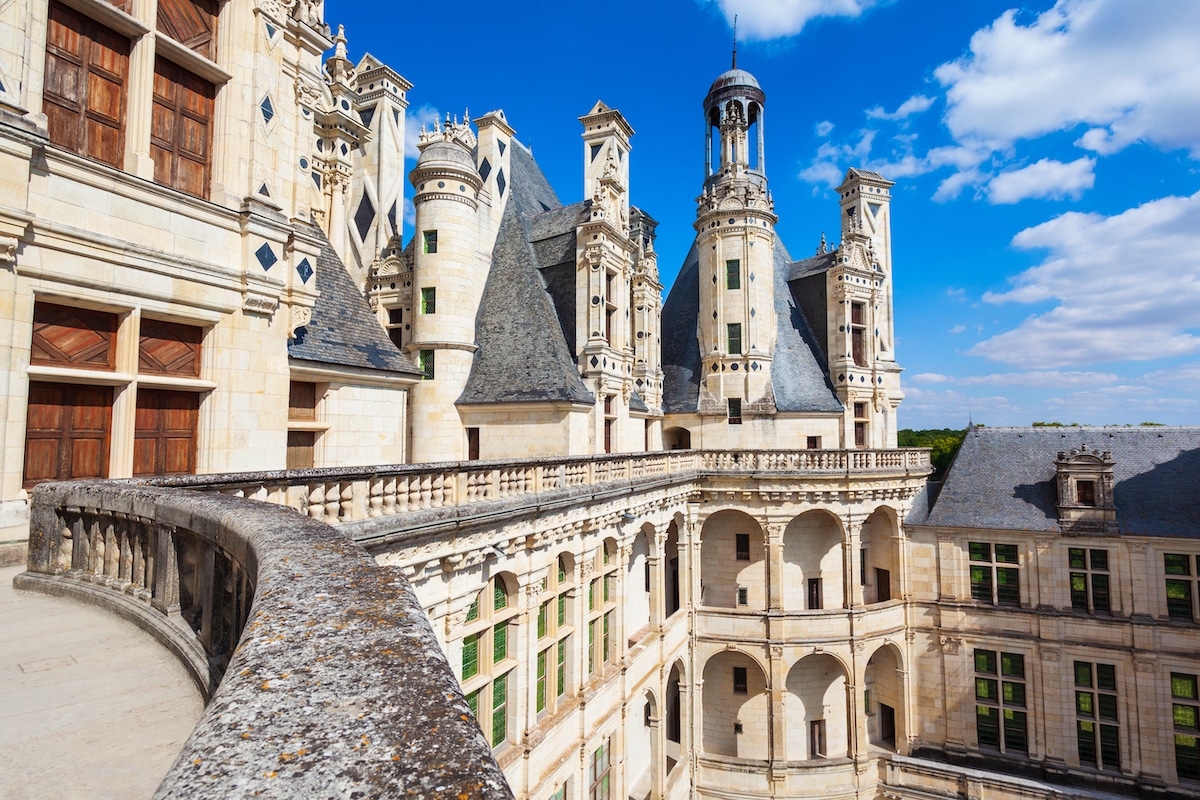
Château de Chambord in Chambord, Centre-Val de Loire, France (Photo: Stock Photos from saiko3p/Shutterstock)
